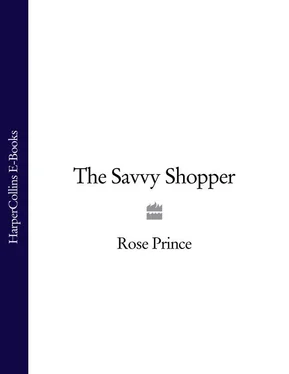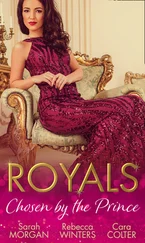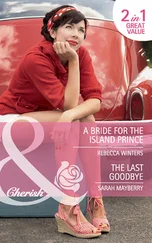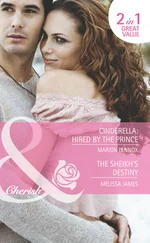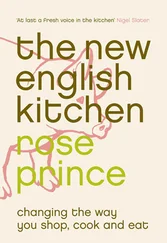The London branch of a Parisian bakery started by Pierre Poilâne in 1932. Signature breads are their huge wheels of stoneground wheat sourdough, rye bread and dense fruit bread. The large loaves can be sliced or cut and bought by weight. Mail order available.
St John Bread and Wine, Spitalfields, 94-96 Commercial Street,London EI 6LZTel: 020 7247 8724www.stjohnbreadandwine.com
Huge, truly rustic, traditionally made loaves from Fergus Henderson’s charismatic bakery.
Staff of Life Bakery, 2 Berrys Yard, off Finkle Street,Kendal LA9 4ABTel: 01539 738606
Artisan breads made by a true craft-bread enthusiast using local, traditionally milled flour. During the season there is a damson sourdough using the fermented yeast of the fruit, sourced from the Lyth Valley. Also, ask for his snail-decorated loaves. Home delivery available.
True Loaf Bakery, Mount Pleasant Windmill, Kirton-in-Lindsey,North Lincolnshire DN2I 4NHTel: 01652 640177www.trueloafbakery.co.uk
Thirty different breads made from organic wheat flour, wheat seed and malt flours traditionally milled on the premises.
So what would you and the rest of the family like for breakfast? A tablespoon of refined white sugar, a few vitamin pills, a couple of grams of salt—oh yes, and some milled grain? The latter on its own would be better. A bowl of oats needs little embellishment but this great and simple idea has given birth to an extended family of hybrid cereal breakfasts: quick to prepare, easy to store and supposedly good for you. But are they? Why do they need added vitamins and salt and why so much sugar? Packaging that is super attractive to children, free gifts and chocolate-coated goodies inside have made some cereals the X-rated, top-shelf mag of food. One to keep out of the reach of children…
When I buy breakfast cereal, am I buying a health food?
Don’t be dazzled by the ‘fortified with vitamins’ statement on the pack; it is spin. The vitamins are added because much of the goodness is lost when milling the grain (see Flour, page 181).
Is muesli a better option?
The original Bircher muesli is a great option. Soak oats and almond slivers in a mixture of water, milk and lemon juice overnight, then in the morning add grated apple (or other fresh fruit) and serve with honey. Substitute yoghurt for the milk, if you wish. Be wary of some modern commercial mueslis, though, which can contain added sugar, and even chocolate. Those packed with masses of nuts and dried fruits can also have quite a high calorie count. They are at least wholefoods, though, and are a better option than many of the sugary milled cereals on offer.
Why is salt added to breakfast cereals?
Because many of those grains have no flavour, thanks to the total removal during milling of the outer layers of grains that provide their fibre and their flavour – the germ in wheat, for example. Grains such as maize have very little flavour anyway. Kellogg’s cornflakes were judged by the National Food Alliance to be nearly as salty as seawater and to contain 0.87g of salt per serving, which is nearly a third of a three-year-old’s daily allowance. A high-salt diet is said to be a cause of high blood pressure, heart attacks and kidney failure and has even been linked to stomach cancer, asthma and osteoporosis.
It is inexplicable why some cereals need to be coated or glued together with something as pointless as refined white sugar but most brands contain between 30 and 50 per cent. Take Quaker Sugar Puffs: the box says ‘nutritious’ and ‘fortified with vitamins and iron’, but this breakfast cereal contains 35 per cent sugar, nearly two teaspoons of sugar in every 30g serving. Surely the manufacturers are not trying to lure children into pestering parents for sugary breakfasts rather than wholefood ones? Sugary cereals give the breakfaster a burst of energy, which quickly diminishes, leaving no other nutritional benefit.
Which breakfast cereals are low in sugar?
Of course, pure oats and bran don’t contain any sugar. Of the manufactured brands, Shredded Wheat has no added sugar and Weetabix and Rice Krispies are low in sugar. While sugar is an obvious addition to cereals such as Frosties and Frosted Shreddies, it is also added to some of the more ‘natural-looking’ cereals, including Kellogg’s cornflakes and Cheerios. The Food Commission has criticised Nestlé for the high sugar and salt content of most of its cereals.
Are there chemicals in my breakfast?
In some cereals, yes. The worrying aspect of this is that in spite of the intensive milling of the grain, pesticide residues are regularly detected in 10—30 per cent of conventional corn-based cereals. Residues of fumigants, which are used to keep pests away from cereals while in storage, have also been found on breakfast cereal.
Could there be GM ingredients in cereal?
Not at present but contamination remains a risk while GM technology is supported in the US and some South American countries. Kellogg’s products in Europe are reportedly free from proteins from GM soya or maize. Nestlé, whilst it doesn’t use GM ingredients in the UK, is not unsupportive of the use of gene technology. Weetabix Ltd stated that no GM ingredients, additives or derivatives are used in any of its processes. Quaker Oats Ltd says it does not use ingredients containing GM material in any Quaker product. The company tests all soya-based lecithin (E322), an emulsifier used in its products, to ensure freedom from GM material.
Which cereals are GM free?
Apart from the brands mentioned above, organic cereal manufacturers best police the ingredients in their cereals for GM material.
Are cereal bars as wholesome as they look?
Check the labels. Despite their earthy wrapping, they can contain a lot of sugar, salt and flavourings. According to the Food Commission, some cereal bars are very unhealthy. For example, a Kellogg’s Coco-Pops bar was found to contain a greater proportion of calories from sugar than milk chocolate, and there were saturated fats in a Kellogg’s Rice Krispies bar forming 29 per cent of its calories. The Food Commission concluded that many breakfast cereal bars had higher levels of sugar than nutritionists recommend for a healthy breakfast such as a bowl of cereal with semi-skimmed milk. Ten had higher fat levels.
You would imagine, given that cereal bars are popular with children, that pesticide levels would be carefully monitored. In 2001 cereal bars were tested for residues for the first time and they were found in over 70 per cent of them.
How environmentally friendly are breakfast cereals?
The packaging is often mainly recycled but it is a problem nonetheless. There’s too much of it, with too little inside. It is possible to buy known brands of cereal loose by the kilo from ‘weigh’ shops. This is a good and inexpensive avenue to take, providing you trust the source.
Where to buy good breakfast cereals
Perhaps, given the above information, it would be better if we all ate porridge, but the following sell good-quality breakfast cereal. Do read labels, however. These companies usually sell a range and there may be salt and sugar added to some of their products and not to others.
Alara Wholefoods, 110-112 Camley Street, London NWI OPFTel: 020 7387 9303www.alara.co.uk
Imaginative organic muesli-based breakfast cereals, including a fairly traded muesli and a range specially designed for the needs of certain age groups: children (‘Growing’), expectant mothers (‘Blooming’) and older people (‘Prime’—forgive the pet-food connotations, this one is very good). The company has a strong ethical policy, sourcing locally (British) where possible. Home delivery available.
Читать дальше
